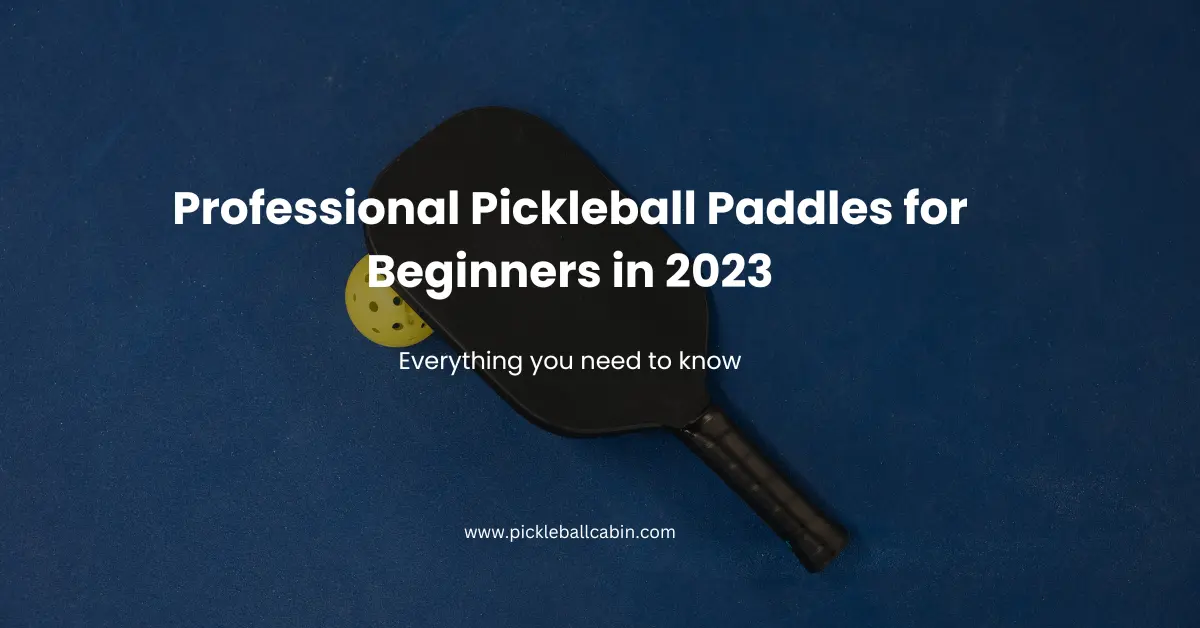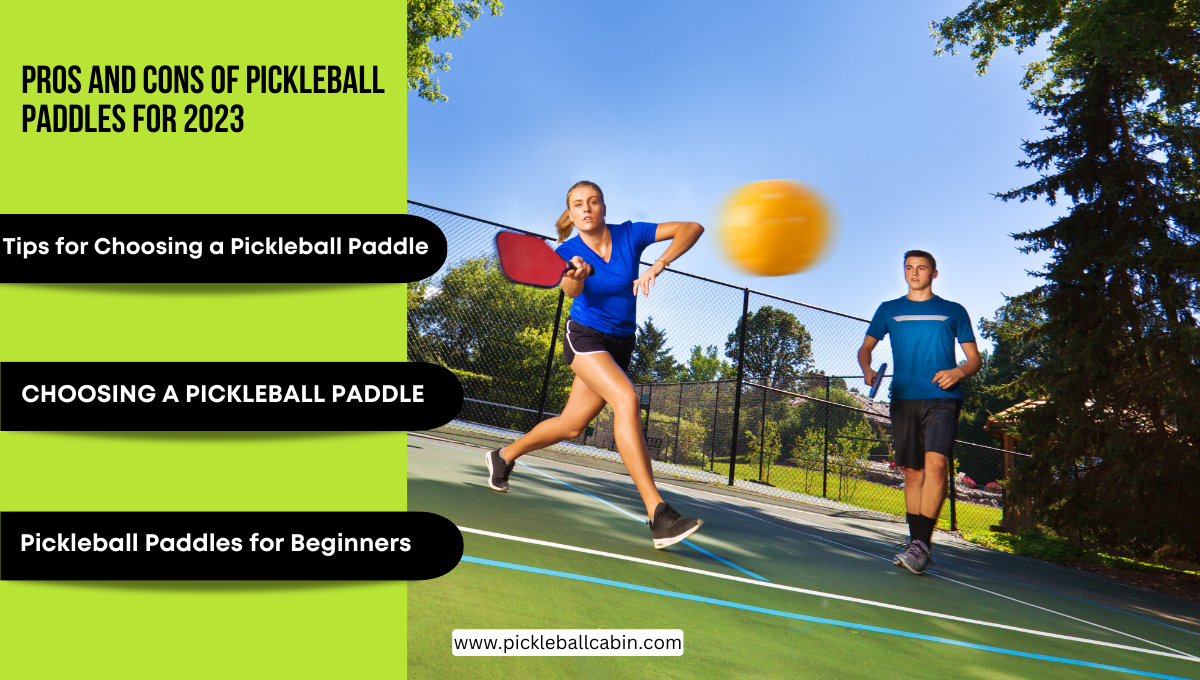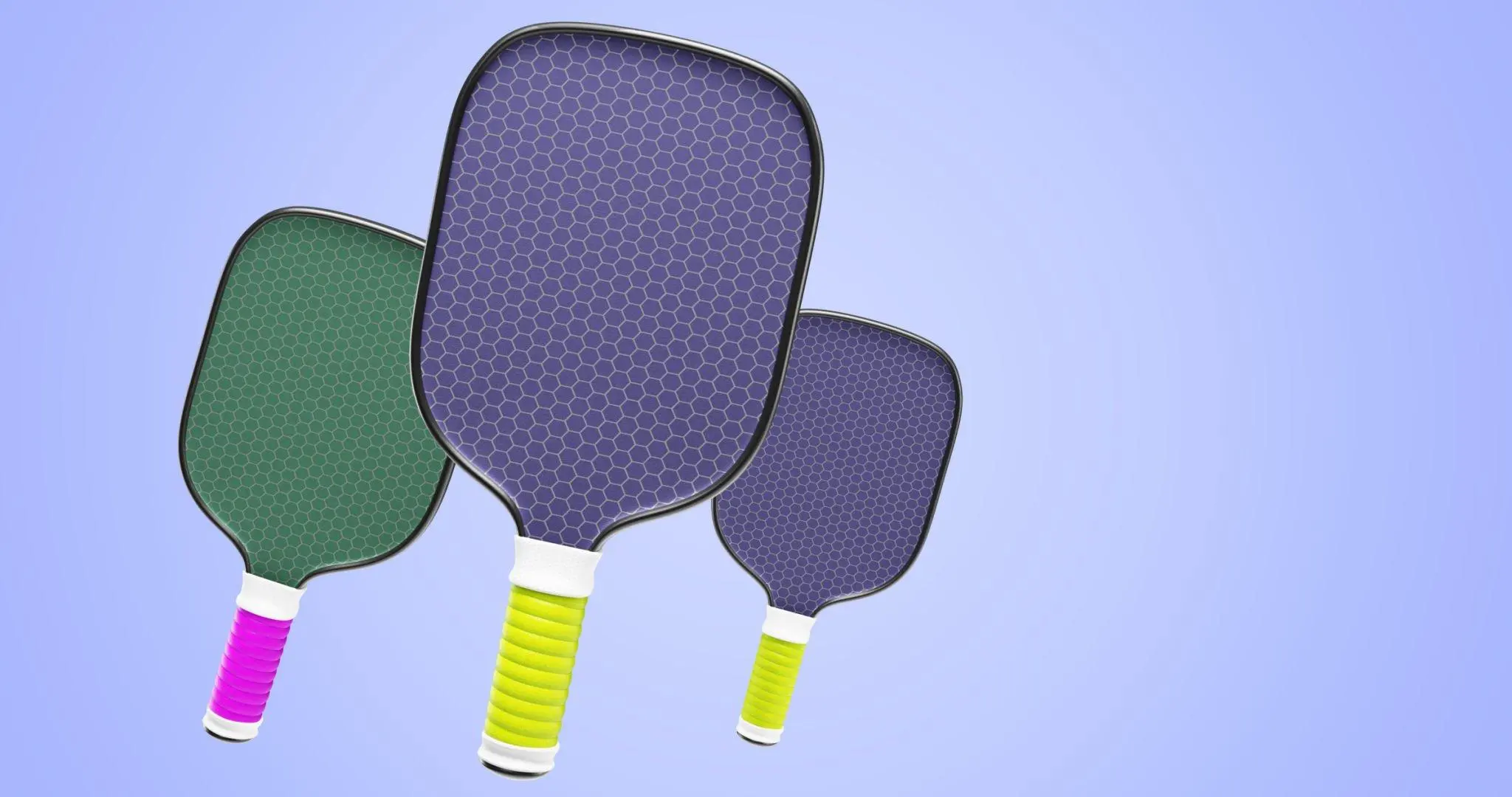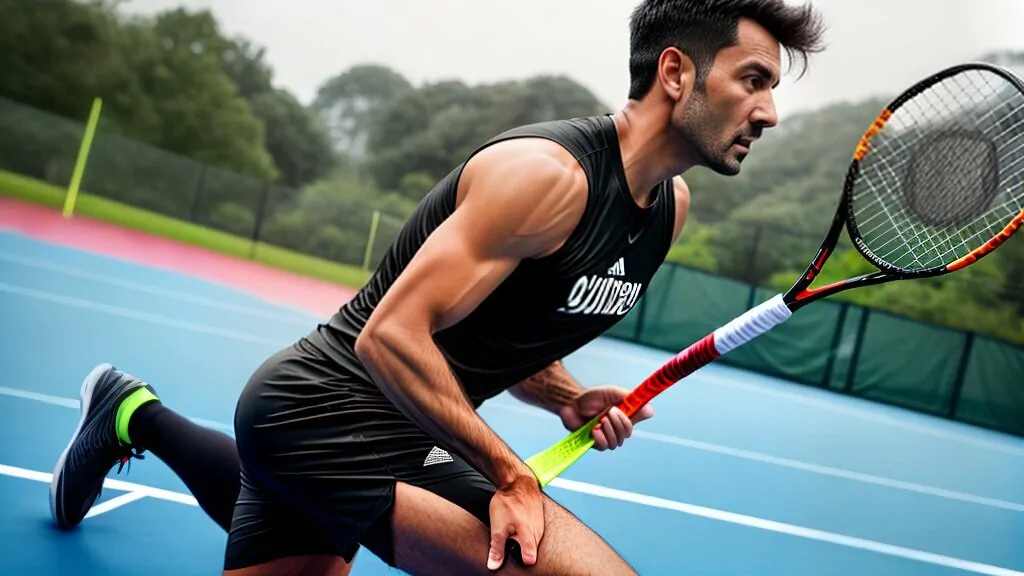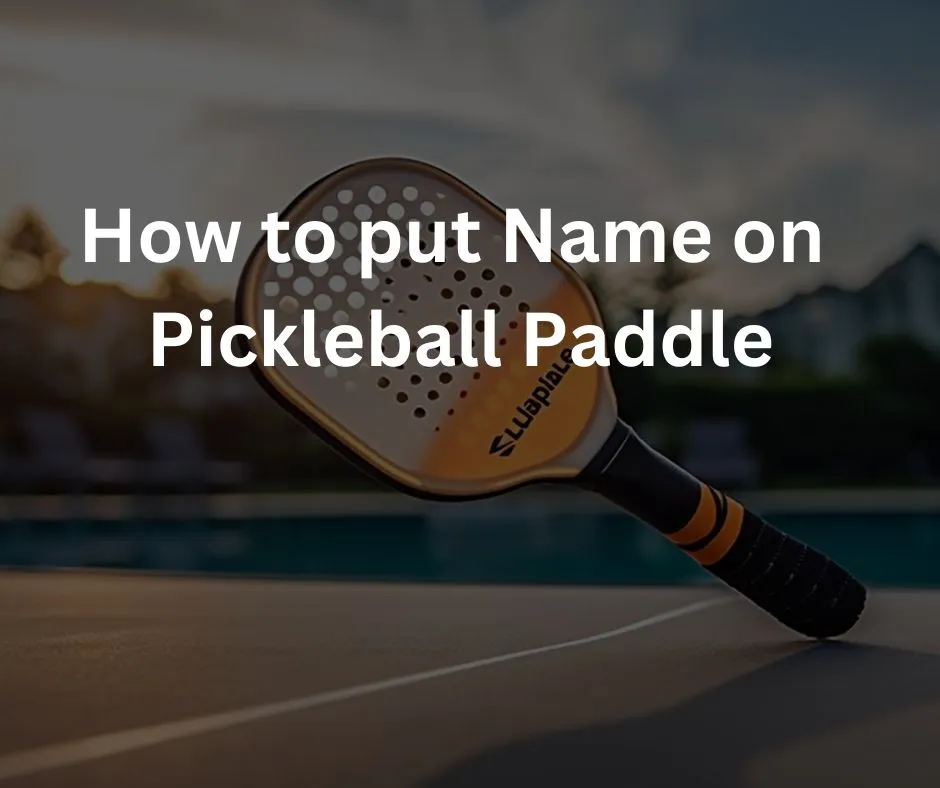As a professional pickleball player, I know the importance of a good grip on the paddle. A comfortable and secure grip can be the difference between a win and a loss. Overgrip is a popular solution for players looking to achieve a better grip on their paddle.
In this article, I will provide expert tips and a step-by-step guide for applying overgrip on a pickleball paddle. I will also offer advice on placement and share tips for maintaining the grip’s effectiveness.
Key Takeaways
- Proper grip is essential for enhanced gameplay.
- Overgrip is a popular solution for achieving a better grip on a pickleball paddle.
- This article offers a step-by-step guide on how to put overgrip on a pickleball paddle.
- Expert advice is provided on overgrip placement and maintaining grip effectiveness.
How To Determine Pickleball Paddle Grip Size: Expert Tips & Guide
Step-by-Step Guide for Applying Overgrip on Pickleball Paddle
If you want to improve your grip on a pickleball paddle, applying an overgrip is an effective solution. Here’s a step-by-step guide on how to do it yourself:
| Materials Needed: |
|---|
| – Paddle |
| – Overgrip of your choice (e.g., ProLite, Gamma, Tourna) |
| – Scissors |
Step 1: Prepare the Paddle
Clean the handle of your pickleball paddle with a damp cloth to remove any dirt and debris. Make sure the handle is dry before proceeding to the next step.
Step 2: Remove the Overgrip from its Packaging
Unwrap the overgrip from its packaging, making sure to remove any plastic wrapping or tape. Note which end of the overgrip has the sticky adhesive layer.
Step 3: Start Wrapping
Position the paddle so that the handle is facing up. Begin wrapping the overgrip at the base of the handle, leaving a small portion uncovered to prevent the overgrip from unraveling.
Wrap the overgrip around the handle, ensuring that the adhesive layer is facing down. Keep the overgrip taut as you wrap, but not so tight that it stretches or distorts.
Step 4: Trim Excess Overgrip
When you reach the end of the handle, cut the overgrip, leaving a small amount to fold over the edge of the handle. Press the end of the overgrip down to secure it in place.
Step 5: Secure the Overgrip
Tightly wrap the finishing tape (usually included with the overgrip) around the end of the handle to secure the overgrip. Cut off any excess tape if necessary.
And that’s it! With these simple steps, you can attach an overgrip to your pickleball paddle on your own and enjoy an enhanced grip during your gameplay.
Expert Advice on Overgrip Placement for Pickleball Paddle
When it comes to placing overgrip on a pickleball paddle, there are a few key considerations to keep in mind. One of the most important is finding the right balance between comfort and control. You want your grip to be comfortable enough to avoid blisters or discomfort, but also secure enough to allow for precise shots and movements on the court.
One thing to keep in mind is that the placement of the overgrip can vary depending on your playing style. For example, if you tend to hold the paddle with a tight grip, you may want to place the overgrip closer to the bottom of the handle. On the other hand, if you prefer a looser grip, placing the overgrip slightly higher on the handle can provide greater control.
Another important consideration is avoiding common mistakes when placing the overgrip. One mistake to avoid is stretching the overgrip too tightly, which can lead to premature wear and tear. It’s also important to make sure the overgrip is aligned straight with the handle to prevent any slippage during gameplay.
Ultimately, the key to successful overgrip placement is experimentation and practice. Try out different positions and grip strengths to find what works best for you. And don’t be afraid to ask other pickleball players for advice or tips!
Essential Steps for Applying Overgrip on Pickleball Paddle
When applying overgrip on your pickleball paddle, it is important to follow a few essential steps to ensure a secure and comfortable grip. Here are some best practices to keep in mind:
| Step | Description |
|---|---|
| Step 1: | Prepare the paddle by removing any existing grip or residue. Clean the handle with rubbing alcohol and let it dry completely. |
| Step 2: | Unwrap the overgrip and find the tapered end. Peel off the adhesive backing and place the tapered end at the bottom of the handle, with the adhesive side facing down. |
| Step 3: | Begin wrapping the overgrip around the handle, making sure to stretch it slightly as you go. Wrap the grip in a diagonal pattern, overlapping each previous layer by about a quarter of an inch. |
| Step 4: | Continue wrapping the overgrip up the handle until you reach the top, leaving about an inch of overgrip hanging off the end. |
| Step 5: | Secure the overgrip by wrapping the excess inch back down the handle, creating a knob at the end. Tuck the knob under the grip and use the finishing tape provided to secure it. |
| Step 6: | Check the grip for any loose areas or wrinkles. Smooth them out and make sure the grip is secure and comfortable. |
Remember to always stretch the overgrip as you wrap it around the handle to prevent any unwanted wrinkles or gaps. It is also important to make sure the overgrip is not too thick, as this can affect your grip on the paddle. By following these essential steps and using the right techniques, you can ensure a properly applied overgrip that will enhance your pickleball gameplay.
Pickleball Paddle Grip Size Chart: Find Your Perfect Fit Today
Tips for Placing Overgrip on Pickleball Paddle
When it comes to placing overgrip on your pickleball paddle, there are a few additional tips and tricks that can help enhance your grip and overall gameplay experience. Here are some expert recommendations to consider:
1. Find the Right Thickness
Overgrip typically comes in different thicknesses, each providing a different level of cushioning and tackiness. It’s important to find the right thickness for your personal preference and playing style.
2. Keep Grip Clean
It’s essential to keep your grip clean and free of dirt and oils, which can make the grip slippery and reduce its effectiveness. Use a damp cloth to wipe down the grip after each game, and consider washing the grip periodically to remove any built-up dirt.
3. Adapt to Weather Conditions
Humidity and temperature can greatly affect your grip’s effectiveness. In hot and humid conditions, a tackier grip may be more effective, while in cooler and drier conditions, a less tacky grip may provide better control. Experiment with different grips to see what works best for you in varying weather conditions.
4. Overlap Grip for Comfort
For added comfort, consider overlapping the overgrip slightly when applying it to your paddle. This can provide a thicker and more cushioned grip, which may be beneficial for players who experience hand fatigue during longer games.
5. Secure Grip Tightly
When attaching the overgrip, be sure to pull it tightly and secure it firmly to the paddle. A loose grip can cause the overgrip to shift during gameplay, reducing its effectiveness.
6. Replace Grip When Necessary
Over time, your grip will wear down and lose its tackiness and cushioning. It’s important to replace your grip periodically to ensure optimal performance. Consider replacing your grip every few months or after a certain number of games.
By implementing these tips and tricks, you can ensure that your overgrip is properly placed and maintained, providing you with a comfortable and effective grip for your pickleball games.
Pickleball Paddle Grip Replacement: Revamp Your Game Today
Conclusion
Putting overgrip on a pickleball paddle can significantly enhance your gameplay experience. It provides a comfortable and secure grip, which is essential for maintaining control and precision while playing.
Remember to follow the step-by-step guide provided in this article, using the necessary materials and techniques for the best results. Additionally, pay attention to the proper placement of the overgrip and make sure it is tightly secured.
Final Thoughts
By implementing the tips and techniques provided in this article, you can ensure a long-lasting and effective overgrip on your pickleball paddle. Experiment with different grip thicknesses and placement positions to find what works best for you. Don’t forget to keep your grip clean and adapt to different weather conditions.
Having a well-applied overgrip can greatly improve your gameplay and confidence on the court. So, go ahead and give it a try. You might be surprised by how much difference it can make.
FAQ
Q: How do I put overgrip on a pickleball paddle?
A: Putting overgrip on a pickleball paddle involves a step-by-step process. First, gather the necessary materials, including the overgrip itself and a clean towel. Next, prepare the paddle by removing any existing grip or residue. Then, align the overgrip with the top of the paddle and start wrapping it tightly around the handle, ensuring an even overlap. Finally, secure the end of the overgrip with tape or adhesive, and make any necessary adjustments for comfort and control.
Q: What is the proper placement of overgrip on a pickleball paddle?
A: Proper placement of overgrip on a pickleball paddle is essential for a comfortable and effective grip. It is recommended to start wrapping the overgrip from the top of the handle, ensuring that it covers the entire grip area. Finding the right balance between comfort and control is key, so experiment with different grip positions to suit your playing style. Avoid common mistakes such as overlapping the overgrip too much or leaving gaps that can affect your grip stability.
Q: What are the essential steps for applying overgrip on a pickleball paddle?
A: There are a few essential steps to follow when applying overgrip on a pickleball paddle. First, make sure to stretch the overgrip slightly to activate its adhesive properties. Then, align the overgrip correctly with the top of the handle and start wrapping it tightly and evenly. Pay attention to any overlapping or gaps and adjust accordingly. Finally, secure the end of the overgrip tightly with tape or adhesive to ensure it stays in place during gameplay.
Q: What tips can you provide for placing overgrip on a pickleball paddle?
A: When placing overgrip on a pickleball paddle, consider these tips for optimal results. Firstly, choose the right overgrip thickness that suits your preference and playing style. Additionally, maintain the cleanliness of your grip by regularly wiping it with a clean towel or damp cloth. Lastly, adapt your grip to different weather conditions by using overgrips with moisture-absorbing properties or applying overgrip enhancers for added tackiness.

